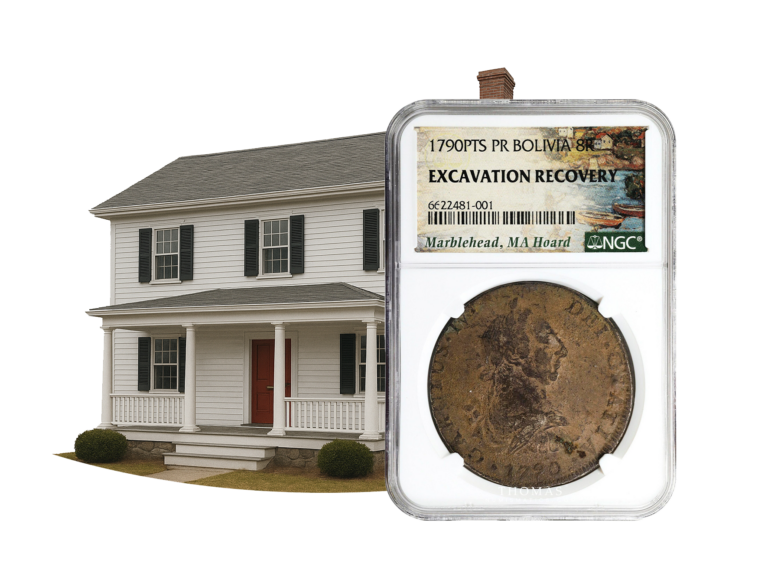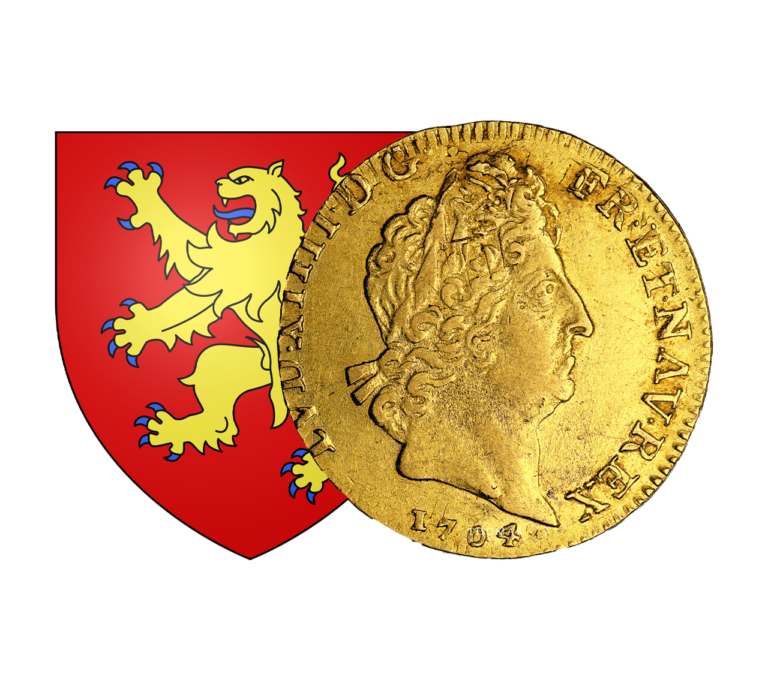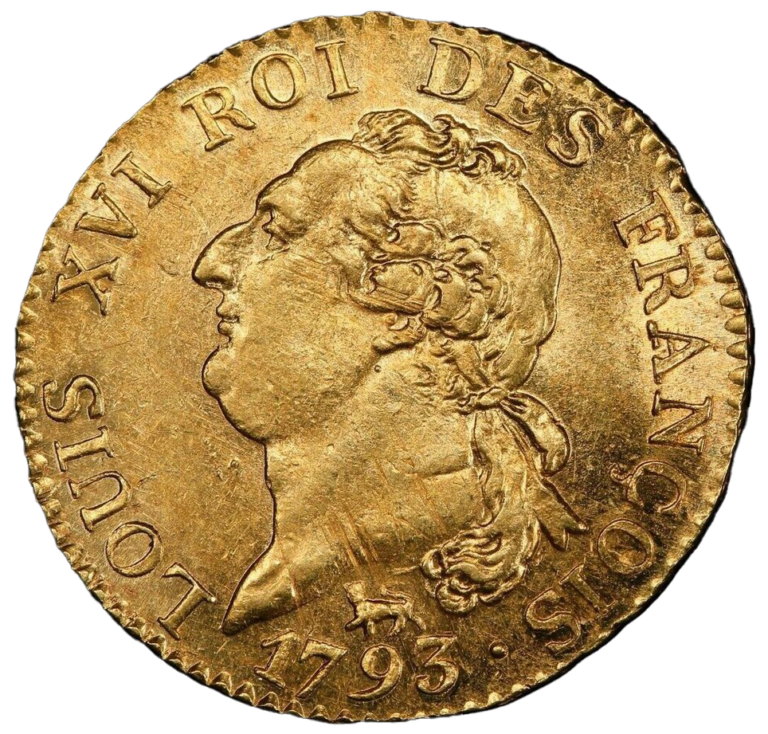
Discover all the news and articles from TNUMIS Magazine exclusively
Augustale: an Italian coin
Do you know Augustale? They are highly sought after gold coins in the numismatic world and are among the most famous coins of the Middle Ages. Minted in Italy from 1231, they are largely inspired by antique coins; a way for Frederick II, their creator, to follow the line of Roman emperors.
Frederick II, a brief history
In just a few years, Frederick II restored the splendor of an immense empire, and “was perhaps the ultimate incarnation in the West of imperial power without limits or frontiers”.1
Born in 1194 and died in 1250, Frederick of Hohenstaufen was the son of Henry VI and Constance of Hauteville. He was elected King of Sicily and the Romans in 1196, the same year he was orphaned and entrusted to the guardianship of Pope Innocent III. He was crowned Emperor of the Romans in 1220, thus reuniting Sicily with the German Empire.
Throughout his reign, he sought to impose his power throughout Italy and beyond, and came into conflict with the papacy. He was excommunicated twice during his reign by Pope Gregory IX.
He led the Sixth Crusade peacefully and reconquered the holy sites of Christianity. On his return from Jerusalem in 1231, he reorganized the kingdom by modifying its legislation and administration. These laws were compiled in a book entitled the Liber augustalis (otherwise known as the Constitutions of Melfi). In it, he revealed his vision of an absolute monarchy.
In the same year, as part of this major reform, he had a new gold coin minted in the workshops of Messina and Brindisi: the augustale.
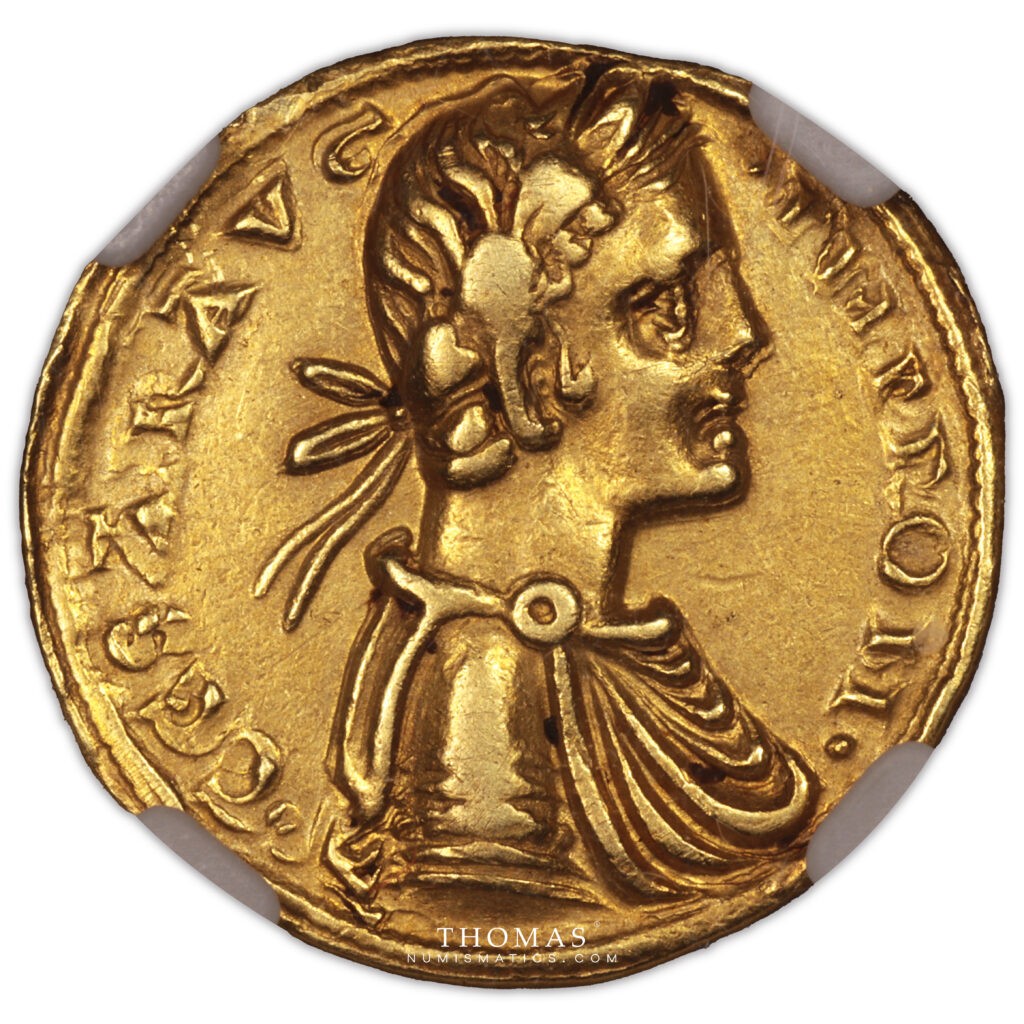
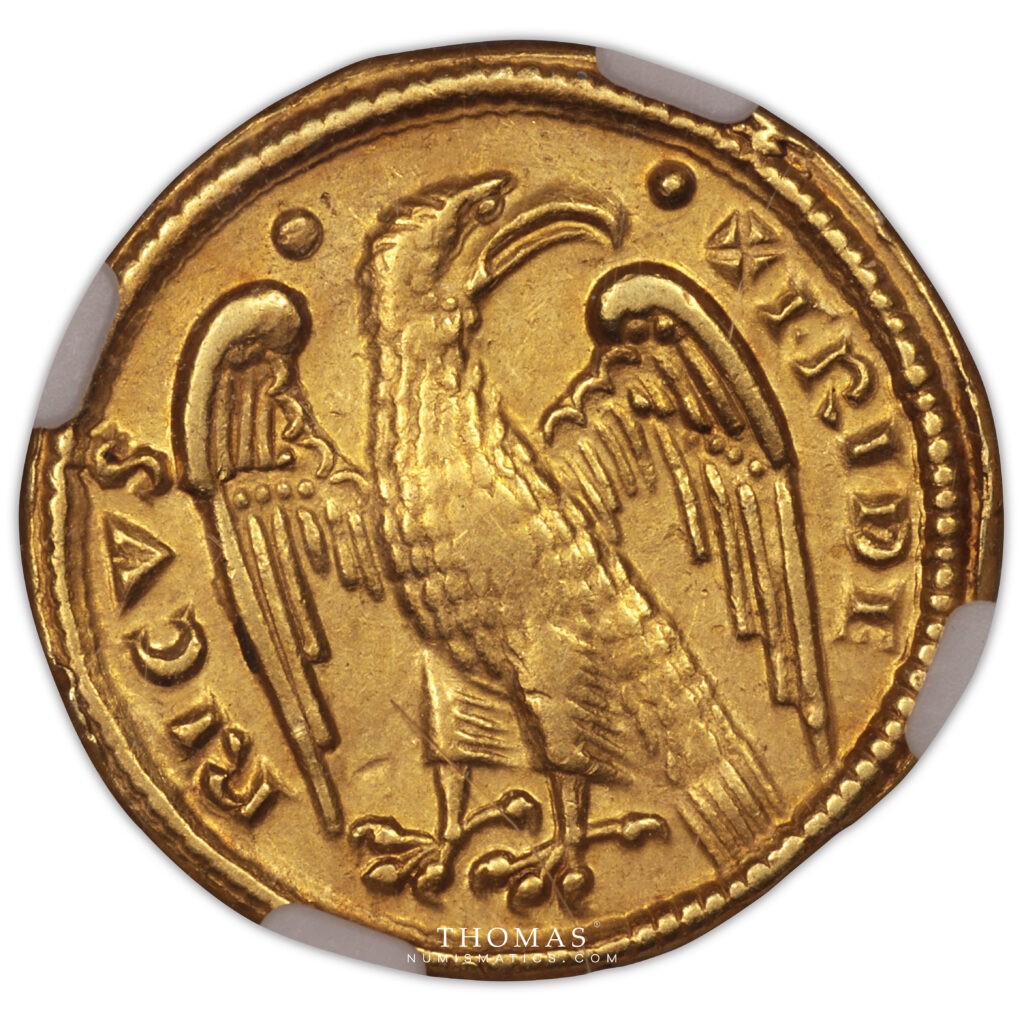
Augustales, an Italian coin
An ancient influence
Why did Frederick II choose the name Augustale?
In an article in the Revue de la BNU, Daniel Bornemann reminds us that the name Augustus has several meanings. An august inspires veneration, but also obtains the favor of the gods. The first Roman emperor was also called Augustus. By naming himself as such, Frederick II reinforced his legitimacy to rule, and followed in the footsteps of the emperors of antiquity. At the same time, King Philip of France also called himself Augustus.
Augustals are logically inspired by ancient coins. On the obverse, the emperor’s bust is dressed in the imperial mantle, with a laurel wreath on his head. He is dressed in antique style, like the Roman emperors. It also reads “IMP. ROM. CÆSAR AUG”. On the reverse, the imperial eagle with outstretched wings is accompanied by the inscription Fridericus.
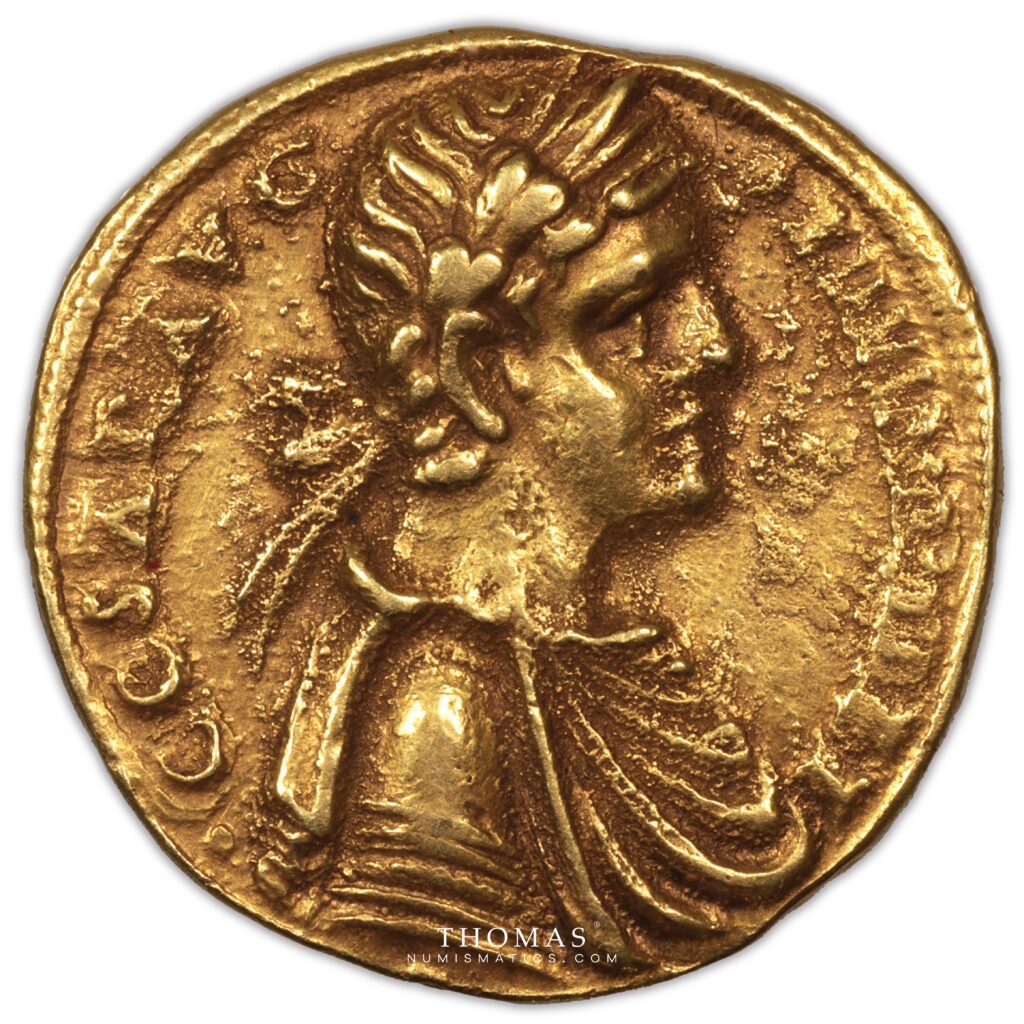
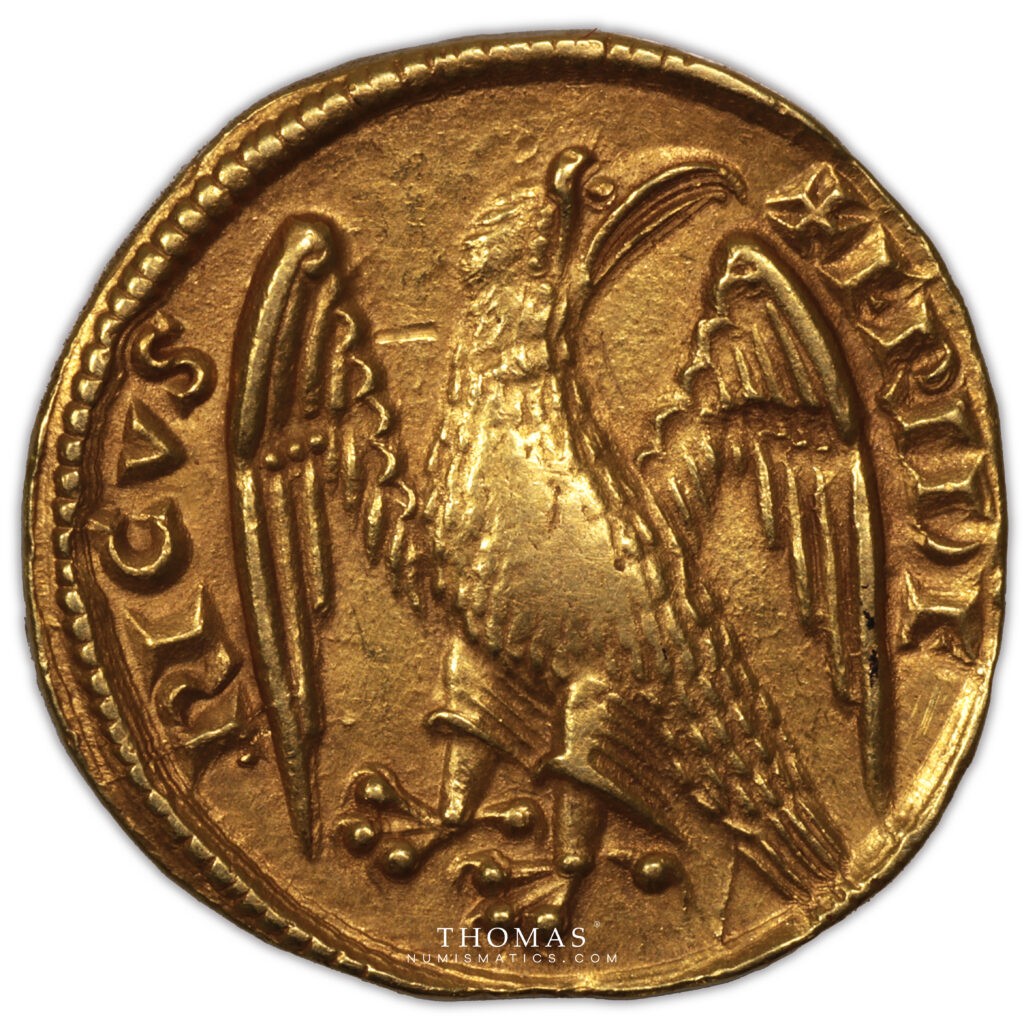
An exceptional currency
According to Daniel Bornemann, the Augustale is exceptional for several reasons.
Aesthetically, it is one of the most accomplished coins of the Middle Ages. The workmanship of contemporary coins from the early 13th century is nowhere near as accomplished. On Augustales, the portrait of Emperor Frederick II has lively features, and the representation of the eagle also adds a lively touch. The eagle was already depicted in its natural form on Ptolemaic coins from Egypt in the 3rd century B.C., except that it no longer holds Zeus’ thunderbolts in its claws. The eagle on the augustale is animated, giving the impression of turning around in mid-flight.
Another exceptional fact: the Augustale was the first gold coin minted in the West (along with the Sicilian “Tari”), since until then, Western workshops had only minted silver denarii.
Finally, the augustale is remarkable for its content, which beyond its value, was also a real geopolitical asset. Its weight and title were chosen to suit the rules of East and West. Their 20.5-carat fine gold content was worth as much as a Byzantine hyperpère as an Arab double dinar, thus facilitating trade. This was a clear indication of Frederick II’s desire to bring the two worlds together.
For those who want to know more, Augustales have been the subject of various studies, including one by Heinrich Kowalski, in German (1976) and French (1979), which lists and locates all known examples.
We also regularly offer augustales for sale in our online store.
Sources :
1 Pierre Monnet dans L’Histoire mensuel 209, daté d’avril 1997
Daniel Bornemann, « L’augustale de Frédéric II », La Revue de la BNU [En ligne], 1 | 2010, mis en ligne le 01 janvier 2021, consulté le 08 août 2023.Wikipédia
